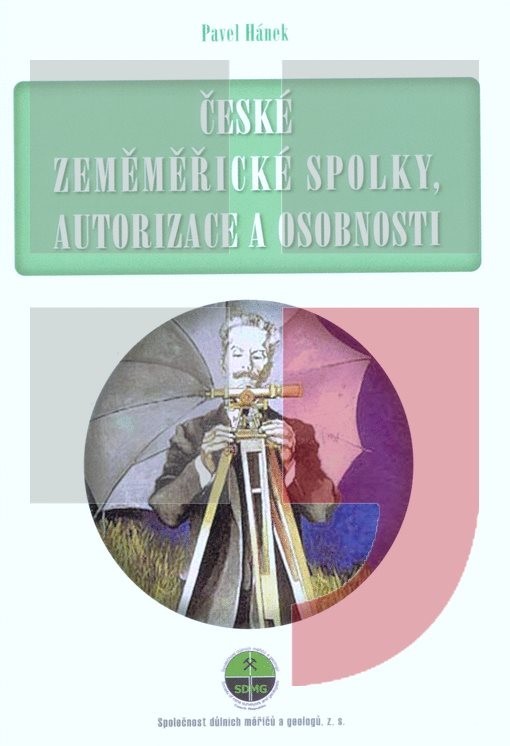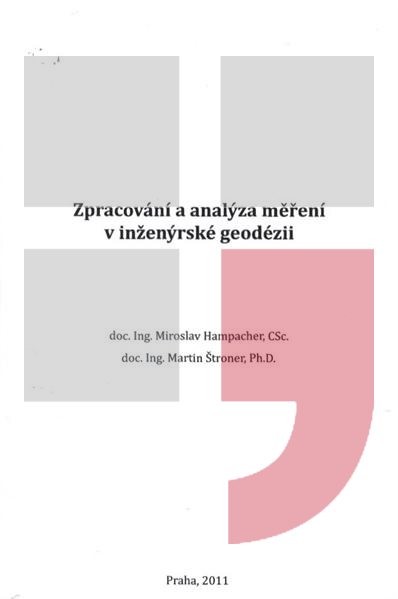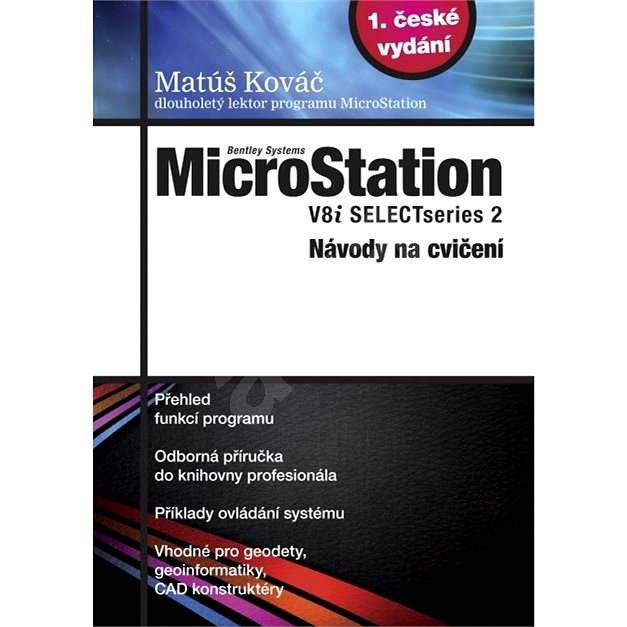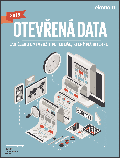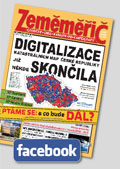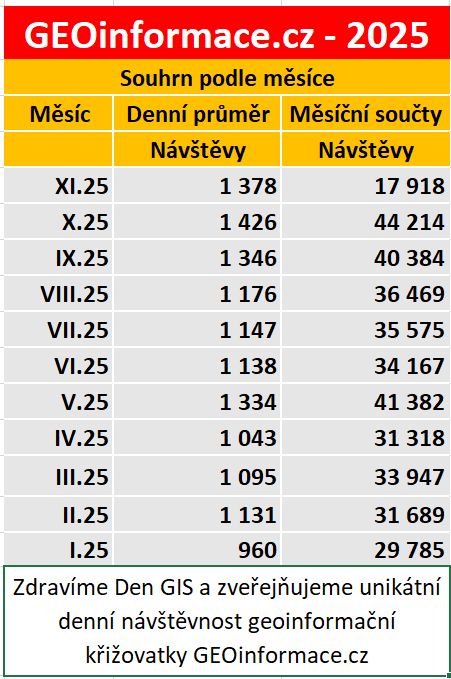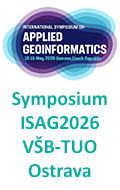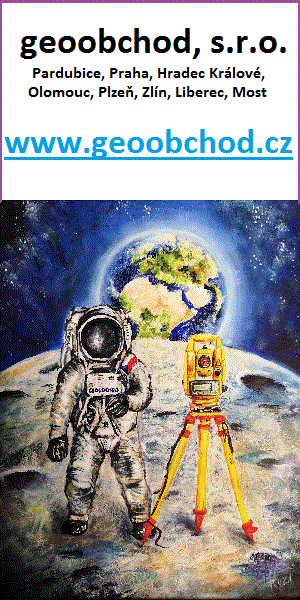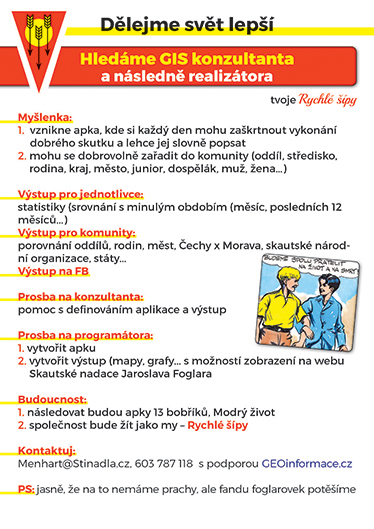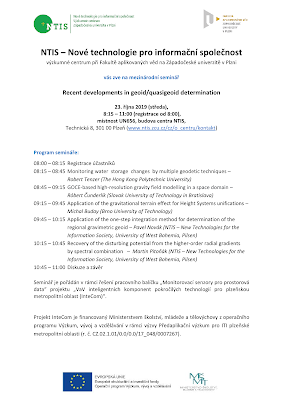zprávy
zdroje zpráv:Omezení provozu
17.10.2019 10:45 ČÚZK - předpisy a opatření Katastrální úřad pro Moravskoslezský kraj - Katastrální pracoviště Krnov zveřejnil novou aktualitu: V pátek 25. října 2019 nebudou z důvodu nezbytné provozní odstávky informačních systémů poskytovány údaje katastru nemovitostí, a to na žádném katastrálním pracovišti ani pobočce CzechPOINT.Podatelny katastrálních pracovišť budou přijímat pouze písemná podání a žádosti. Ze stejného důvodu také nelze pro platbu správních poplatků využít platební kartu.
Omlouváme se všem klientům za případné komplikace spojené s tímto mimořádným omezením provozu a děkujeme za pochopení.
Omezení provozu
17.10.2019 10:43 ČÚZK - předpisy a opatření Katastrální úřad pro Moravskoslezský kraj - Katastrální pracoviště Frýdek-Místek zveřejnil novou aktualitu: V pátek 25. října 2019 nebudou z důvodu nezbytné provozní odstávky informačních systémů poskytovány údaje katastru nemovitostí, a to na žádném katastrálním pracovišti ani pobočce CzechPOINT.Podatelny katastrálních pracovišť budou přijímat pouze písemná podání a žádosti. Ze stejného důvodu také nelze pro platbu správních poplatků využít platební kartu.
Omlouváme se všem klientům za případné komplikace spojené s tímto mimořádným omezením provozu a děkujeme za pochopení.
Omezení provozu
17.10.2019 10:43 ČÚZK /Urady/Katastralni-urady/Katastralni-urady/Katastralni-urad-pro-Moravskoslezsky-kraj/Katastralni-pracoviste/KP-Frydek-Mistek/O-uradu/Aktuality/Omezeni-provozuOmezení provozu
17.10.2019 10:42 ČÚZK - předpisy a opatření Katastrální úřad pro Moravskoslezský kraj - Katastrální pracoviště Bruntál zveřejnil novou aktualitu: V pátek 25. října 2019 nebudou z důvodu nezbytné provozní odstávky informačních systémů poskytovány údaje katastru nemovitostí, a to na žádném katastrálním pracovišti ani pobočce CzechPOINT.Podatelny katastrálních pracovišť budou přijímat pouze písemná podání a žádosti. Ze stejného důvodu také nelze pro platbu správních poplatků využít platební kartu.
Omlouváme se všem klientům za případné komplikace spojené s tímto mimořádným omezením provozu a děkujeme za pochopení.
Omezení provozu
17.10.2019 10:42 ČÚZK /Urady/Katastralni-urady/Katastralni-urady/Katastralni-urad-pro-Moravskoslezsky-kraj/Katastralni-pracoviste/KP-Bruntal/O-uradu/Aktuality/Omezeni-provozuDružice Quantum odolala extrémním teplotám
17.10.2019 10:37 Český Kosmický PortálDružice Quantum - evropský přeprogramovatelný telekomunikační satelit - vznikající v rámci programu ESA Partnership Project ve spolupráci s operátorem Eutelsat, úspěšně dokončila 28. září teplotně-vakuové testy.
Zveme Vás na mezinárodní workshop "Recent developments in geoid/quasigeoid determination"
17.10.2019 10:37 Blogující geomatici - FAV ZČU Mezinárodní workshop na téma "Recent developments in geoid/quasigeoid determination" se uskuteční 23. října 2019, v čase 8:15 – 11:00 (registrace účastníků od 8:00) v místnosti UN656 (budova centra NTIS).Více informací o programu workshopu najdete na přiložené pozvánce.
Ice shelf Getz smaller
17.10.2019 10:36 ESA Observing the Earth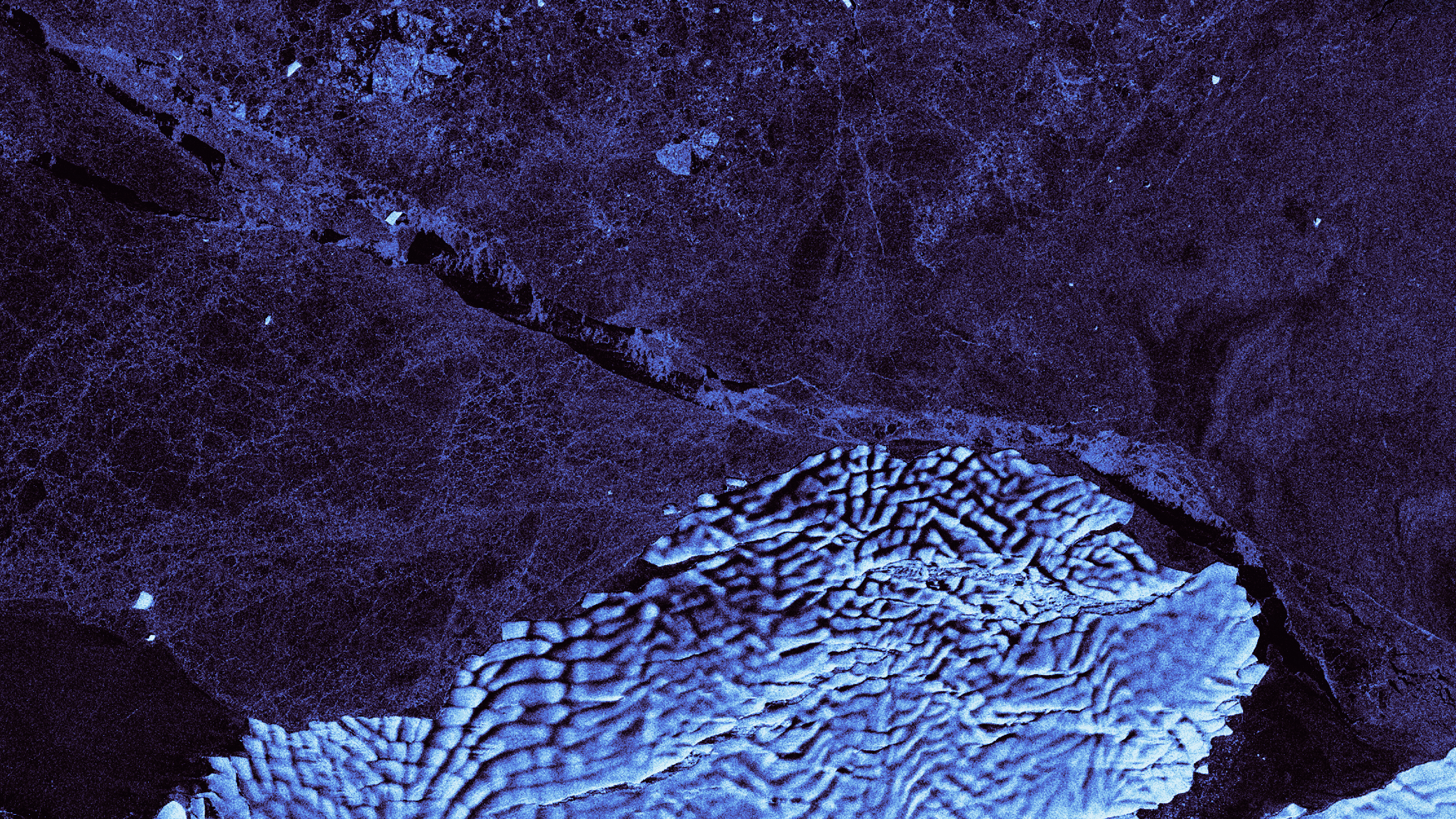
Using images from the Copernicus Sentinel-1 mission, this animation shows the B47 iceberg breaking off from the Getz Ice Shelf in West Antarctica
20191017 Odborný referent / vrchní referent oddělení obnovy a revize KN
17.10.2019 10:27 ČÚZK - předpisy a opatření Katastrální úřad pro Středočeský kraj - Katastrální pracoviště Praha-západ Vyhlášení výběrového řízení: Odborný referent / vrchní referent oddělení obnovy a revize KN V části "Úřední deska", v sekci "Oznámení a jiná úřední sdělení" bylo vystaveno "Oznámení o vyhlášení výběrového řízení na obsazení služebního místa Odborný referent / vrchní referent oddělení obnovy a revize KN"20191017 Odborný referent / vrchní referent oddělení obnovy a revize KN
17.10.2019 10:27 ČÚZK /Urady/Katastralni-urady/Katastralni-urady/Katastralni-urad-pro-Stredocesky-kraj/Katastralni-pracoviste/KP-Praha-zapad/O-uradu/Aktuality/20190923-Rada-odborny-rada-oddeleni-aktualizac-(1)Odborný referent / vrchní referent oddělení obnovy a revize KN
17.10.2019 10:27 ČÚZK /Urady/Katastralni-urady/Katastralni-urady/Katastralni-urad-pro-Stredocesky-kraj/Uredni-deska/Oznameni-a-jina-uredni-sdeleni/Volna-mista/Odborny-referent-vrchni-referent-oddeleni-obnovyOdborný referent / vrchní referent oddělení obnovy a revize KN
17.10.2019 10:27 ČÚZK - předpisy a opatření Katastrální úřad pro Středočeský kraj - Katastrální pracoviště Praha-západvypisuje výběrové řízení na místo Odborný referent / vrchní referent oddělení obnovy a revize KN
Odborný referent / vrchní referent oddělení obnovy a revize KN
Odborný referent / vrchní referent oddělení obnovy a revize KN
17.10.2019 10:27 ČÚZK - volná místa Katastrální úřad pro Středočeský kraj - Katastrální pracoviště Praha-západ vypisuje výběrové řízení na místo Odborný referent / vrchní referent oddělení obnovy a revize KNB47 breaks off Getz Ice Shelf
17.10.2019 10:26 ESA Observing the Earth Image:
Image:
A large iceberg, approximately 260 sq km, recently calved from the Getz Ice Shelf in West Antarctica. Using images from the Copernicus Sentinel-1 mission from 2 September to 14 October 2019, this animation shows the berg breaking off before spinning around in the Amundsen Sea.
The iceberg is approximately 35 km in length, and 10 km wide. Named B47 by the US National Ice Center (NIC), the iceberg was first discovered and confirmed using Copernicus Sentinel-1 imagery by an analyst from the US NIC.
The Copernicus Sentinel-1 mission carries radar, which can return images regardless of day or night and this allows us year-round viewing, which is especially important through the long, dark, austral winter months.
Modeling the Flow of Dangerous Goods by Rail (ArcUser Online)
17.10.2019 9:00 GISCafe.com Webcasts-WebinarsOdstávka IS KN
17.10.2019 8:59 ČÚZK /Urady/Katastralni-urady/Katastralni-urady/Katastralni-urad-pro-Olomoucky-kraj/O-uradu/Aktuality/Odstavka-IS-KNOdstávka IS KN
17.10.2019 8:59 ČÚZK - předpisy a opatření Katastrální úřad pro Olomoucký kraj zveřejnil novou aktualitu: ODSTÁVKA INFORMAČNÍHO SYSTÉMU KATASTRU NEMOVITOSTÍDne 25. října 2019 nebudou z důvodu nezbytné provozní odstávky informačních systémů poskytovány údaje katastru nemovitostí, a to na žádném katastrálním pracovišti ani pobočce CzechPOINT.
Za případné komplikace spojené s tímto mimořádným omezením provozu se omlouváme a děkujeme za pochopení.
Ing. Daniel Janošík, ředitel Katastrálního úřadu pro Olomoucký kraj
Omezení provozu
17.10.2019 8:15 ČÚZK - předpisy a opatření Katastrální úřad pro Moravskoslezský kraj - Katastrální pracoviště Ostrava zveřejnil novou aktualitu: V pátek 25. října 2019 nebudou z důvodu nezbytné provozní odstávky informačních systémů poskytovány údaje katastru nemovitostí, a to na žádném katastrálním pracovišti ani pobočce CzechPOINT.Podatelny katastrálních pracovišť budou přijímat pouze písemná podání a žádosti. Ze stejného důvodu také nelze pro platbu správních poplatků využít platební kartu.
Omlouváme se všem klientům za případné komplikace spojené s tímto mimořádným omezením provozu a děkujeme za pochopení.
Omezení provozu
17.10.2019 8:15 ČÚZK /Urady/Katastralni-urady/Katastralni-urady/Katastralni-urad-pro-Moravskoslezsky-kraj/Katastralni-pracoviste/KP-Ostrava/O-uradu/Aktuality/Omezeni-provozuBudoucnost naší krajiny – seminář v Poslanecké sněmovně
17.10.2019 7:14 Asociace podnikatelů v geomatice Pozvánka a program semináře zde APG dne 30. října 2019 pořádá v Poslanecké sněmovně seminář nazvaný Budoucnost naší krajiny: Co ještě nevíte o pozemkových úpravách?. APG se podařilo získat nad touto akcí záštitu zemědělského výboru PS PČR. Na semináři vystoupí se svou přednáškou prof. Ing. Miroslav Dumbrovský, CSc. z brněnské VUT, RNDr. Petr Kubala, generální ředitel Povodí Vltavy a další odborníci […]Omezení provozu
17.10.2019 7:10 ČÚZK - předpisy a opatření Český úřad zeměměřický a katastrální - Katastrální pracoviště Karviná zveřejnil novou aktualitu: Dne 25. října 2019 nebudou z důvodu nezbytné provozní odstávky informačních systémů poskytovány údaje katastru nemovitostí, a to na žádném katastrálním pracovišti ani pobočce CzechPOINT.Za případné komplikace spojené s tímto mimořádným omezení provozu se omlouváme a děkujeme za pochopení.
v z. Bc. Zuzana Bouzková
vedoucí oddělení právních vztahů k nemovitostem
Ing. Hana Pijáková
ředitelka katastrálního pracoviště
Omezení provozu
17.10.2019 7:10 ČÚZK - předpisy a opatření Český úřad zeměměřický a katastrální - Katastrální pracoviště Karviná zveřejnil novou aktualitu: Dne 25. října 2019 nebudou z důvodu nezbytné provozní odstávky informačních systémů poskytovány údaje katastru nemovitostí, a to na žádném katastrálním pracovišti ani pobočce CzechPOINT.Za případné komplikace spojené s tímto mimořádným omezení provozu se omlouváme a děkujeme za pochopení.
Omezení provozu
17.10.2019 7:10 ČÚZK - předpisy a opatření Katastrální úřad pro Moravskoslezský kraj - Katastrální pracoviště Karviná zveřejnil novou aktualitu: V pátek 25. října 2019 nebudou z důvodu nezbytné provozní odstávky informačních systémů poskytovány údaje katastru nemovitostí, a to na žádném katastrálním pracovišti ani pobočce CzechPOINT.Podatelny katastrálních pracovišť budou přijímat pouze písemná podání a žádosti. Ze stejného důvodu také nelze pro platbu správních poplatků využít platební kartu.
Omlouváme se všem klientům za případné komplikace spojené s tímto mimořádným omezením provozu a děkujeme za pochopení.
Omezení provozu
17.10.2019 7:10 ČÚZK /Urady/Katastralni-urady/Katastralni-urady/Katastralni-urad-pro-Moravskoslezsky-kraj/Katastralni-pracoviste/KP-Karvina/O-uradu/Aktuality/Omezeni-provozuOmezení provozu
17.10.2019 7:10 ČÚZK - předpisy a opatření Katastrální úřad pro Moravskoslezský kraj - Katastrální pracoviště Karviná zveřejnil novou aktualitu: Dne 25. října 2019 nebudou z důvodu nezbytné provozní odstávky informačních systémů poskytovány údaje katastru nemovitostí, a to na žádném katastrálním pracovišti ani pobočce CzechPOINT.Za případné komplikace spojené s tímto mimořádným omezení provozu se omlouváme a děkujeme za pochopení.
APGEO - BUDOUCNOST NAŠÍ KRAJINY – SEMINÁŘ V POSLANECKÉ SNĚMOVNĚ
17.10.2019 2:00 Asociace podnikatelů v geomatice APG dne 30. října 2019 pořádá v Poslanecké sněmovně seminář nazvaný Budoucnost naší krajiny: Co ještě nevíte o ...Datumate Strengthens Its Presence in the UK Striking a Strategic Partnership With Pell Frischmann
16.10.2019 23:39 GISCafe.com Webcasts-Webinars YOKNEAM, Israel, and LONDON, Oct. 16, 2019 — (PRNewswire) — Datumate and Pell Frischmann are pleased to announce today that they have …GIC Collects Post-Disaster Imagery over Saddleridge Fire
16.10.2019 23:38 GISCafe.com Webcasts-Webinars Images available to emergency personnel, GIC member insurers, and the mediaDES PLAINES, Ill., Oct. 16, 2019 — (PRNewswire) —
DES …
Dresdner Robin Maps Home of Future Jersey City Whole Foods Market
16.10.2019 23:38 GISCafe.com Webcasts-Webinars Land-use consultancy Dresdner Robin partners with HLW to scan two levels of Mack-Cali-owned parking garage that will be reconfigured to house leading …Sanborn Announces Expansion of Sanborn GeoServe™ SaaS Solutions
16.10.2019 23:38 GISCafe.com Webcasts-Webinars COLORADO SPRINGS, Colo. — (BUSINESS WIRE) — October 16, 2019 —Sanborn is announcing expansion of its Software-as-a-Service (SaaS) …
Ibeo Automotive USA to discuss next-generation solid state LiDAR for future autonomous driving
16.10.2019 23:38 GISCafe.com Webcasts-Webinars DETROIT, Oct. 16, 2019 — (PRNewswire) — Paula Jones, president of Ibeo Automotive USA – a subsidiary of the Hamburg, Germany-based …Konference o managementu
16.10.2019 22:39 Asociace podnikatelů v geomatice Dne 7. listopadu 2019 se v brněnském hotelu Marriott uskuteční konference o managementu. Organizátoři v pozvánce říkají, že vám poradí, jak správně vést lidi, celý podnik či váš byznys. Pro konferenci zvolili výrok „Ryba smrdí od hlavy“, jelikož úspěch firmy závisí právě na jejím správném řízení – hlavě. Na celodenní konferenci vystoupí několik řečníků, kteří předají své rady a tipy […]Předseda APG přednášel na Technologickém fóru
16.10.2019 22:37 Asociace podnikatelů v geomatice V rámci 25. ročníku mezinárodního stavebního veletrhu FOR ARCH se letos potřetí konalo Technologické fórum – jednodenní diskuzní setkání k aktuálním tématům ze stavebnictví. Letos byla konference věnována digitalizaci stavebnictví a stavebního práva. Na konferenci rovněž vystoupil předseda APG Martin Hrdlička s referátem Garantovaná data – základ digitalizace, ve kterém představil činnost APG a důležitost geomatiky pro stavebnictví.Seminář APG pro Svaz podnikatelů ve stavebnictví
16.10.2019 22:32 Asociace podnikatelů v geomatice APG uspořádala pro Svaz podnikatelů ve stavebnictví odborný seminář, na kterém Ing. Petr Pracný ze společnosti GEFOS a Ing. Zbyněk Kugler ze společnosti GRID představili možnosti současné geomatiky. Oba referáty se setkaly s velmi pozitivní odezvou všech přítomných včetně technického ředitele SPS Ing. Pavla Ševčíka. První přednáška Petra Pracného byla zaměřena na možnosti řízení stavebních strojů s pomocí […]GeoTalks 01 – Jaroslav Burian
16.10.2019 20:00 Katedra geoinformatiky UP OlomoucPrvní díl nového podcastu GeoTalks. Geoinformatika má strašně velké množství přesahů. Běžná práce geoinformatika může jeden den znamenat spolupráci v oblasti sportu, druhý den spolupráci s psychologem, třetí den řešíte povodně a čtvrtý den dopravní témata. Takhle shrnuje svou práci Jarda Burian, host úvodní epizody našeho podcastu.
The post GeoTalks 01 – Jaroslav Burian appeared first on Katedra geoinformatiky.
2019 Commercial UAV Expo Americas to Break Exhibitor & Attendance Records
16.10.2019 19:30 GISCafe.com Webcasts-Webinars 200 + Exhibitors and 2,500+ drone professionals will come together Oct 28-30, 2019 in Las Vegas2019 Commercial UAV Expo Americas to Break Exhibitor …
Fotografie z komentované prohlídky výstavy Pavel Aretin z Ehrenfeldu: mapa mezi defenestrací a Bílou horou [Knihovna geografie, byTopic]
16.10.2019 17:45 Katedra aplikované geoinformatiky a kartografie Přf UK Komentovaná prohlídka se uskutečnila 26. 6. 2018 od 14 hodin. Výstavou, umístěnou v předsálí Mapové sbírky (Albertov 6, druhé patro), prováděla autorka PhDr. et Mgr. Eva Novotná.3D a BIM – základ moderní výstavby
16.10.2019 15:51 HrdličkaNejčastější BIM implementace je v úrovni LOD 200 (tloušťky – velikosti: stěn, oken, dveří, schodišť, podlah, střech + zařizovací předměty), po doplnění o informace v úrovni LOD 300 (materiály, viditelné potrubí včetně armatur, případně skladby stěn, podlah). Kromě sběru dat pro tvorbu 3D dokumentace se v oblasti modelování specializujeme na stavební konstrukce. Naše řešení lze využít např. ve... View Article
The post 3D a BIM – základ moderní výstavby appeared first on HRDLIČKA spol. s r.o. - komplexní služby v oblasti geodézie.
Výstava Pavel Aretin z Ehrenfeldu v Teplicích [Knihovna geografie, byTopic]
16.10.2019 15:20 Katedra aplikované geoinformatiky a kartografie Přf UKZapůjčení výstavy Pavel Aretin z Ehrenfeldu [Knihovna geografie, byTopic]
16.10.2019 15:20 Katedra aplikované geoinformatiky a kartografie Přf UKOmezení provozu
16.10.2019 14:49 ČÚZK - předpisy a opatření Český úřad zeměměřický a katastrální zveřejnil novou aktualitu: Katastrální úřad pro Vysočinu, Katastrální pracoviště Žďár nad Sázavou oznamuje, že ve dnech 23.12.2019 a 30.12.2019 Kontaktní místo Bystřice nad Pernštejnem bude z provozních důvodů uzavřeno.V případě potřeby se obracejte na podatelnu Katastrálního pracoviště Žďár nad Sázavou, se sídlem Strojírenská 8, 591 27 Žďár nad Sázavou.
Děkujeme za pochopení.
Omezení provozu
16.10.2019 14:49 ČÚZK - předpisy a opatření Katastrální úřad pro Vysočinu - Katastrální pracoviště Žďár nad Sázavou zveřejnil novou aktualitu: Katastrální úřad pro Vysočinu, Katastrální pracoviště Žďár nad Sázavou oznamuje, že ve dnech 23.12.2019 a 30.12.2019 Kontaktní místo Bystřice nad Pernštejnem bude z provozních důvodů uzavřeno.V případě potřeby se obracejte na podatelnu Katastrálního pracoviště Žďár nad Sázavou, se sídlem Strojírenská 8, 591 27 Žďár nad Sázavou.
Děkujeme za pochopení.
Omezení provozu
16.10.2019 14:49 ČÚZK /Urady/Katastralni-urady/Katastralni-urady/Katastralni-urad-pro-Vysocinu/Katastralni-pracoviste/KP-Zdar-nad-Sazavou/O-uradu/Aktuality/Omezeni-provozuUpozornění na omezení provozu
16.10.2019 13:54 ČÚZK - předpisy a opatření Katastrální úřad pro hlavní město Prahu zveřejnil novou aktualitu: Omezení provozuDne 25. října 2019 nebudou z důvodu nezbytné provozní odstávky informačních systémů poskytovány údaje katastru nemovitostí, a to na žádném katastrálním pracovišti ani pobočce CzechPOINT. více zde
Upozornění na omezení provozu
16.10.2019 13:54 ČÚZK - předpisy a opatření Katastrální úřad pro hlavní město Prahu zveřejnil novou aktualitu: Omezení provozu z důvodu nezbytné provozní odstávky informačních systémů dne 25. října 2019 nebudou poskytovány údaje katastru nemovitostí a to na žádném katastrálním pracovišti ani pobočce CzechPOINT. Za případné komplikace spojené s tímto mimořádným omezením provozu se omlouváme a děkujeme za pochopení. Dále upozorňujeme, že z téhož důvodu můžeme ve stejný den přijímat platby za Vaše podání pouze v hotovosti nebo kolkových známkách. více zdeUpozornění na omezení provozu
16.10.2019 13:54 ČÚZK /Urady/Katastralni-urady/Katastralni-urady/Katastralni-urad-pro-hlavni-mesto-Prahu/O-uradu/Aktuality/Upozorneni-na-omezeni-provozuUpozornění na omezení provozu
16.10.2019 13:54 ČÚZK - předpisy a opatření Katastrální úřad pro hlavní město Prahu zveřejnil novou aktualitu: Dne 25. října 2019 nebudou z důvodu nezbytné provozní odstávky informačních systémů poskytovány údaje katastru nemovitostí, a to na žádném katastrálním pracovišti ani pobočce CzechPOINT. Za případné komplikace spojené s tímto mimořádným omezením provozu se omlouváme a děkujeme za pochopení. Dále upozorňujeme, že z téhož důvodu můžeme ve stejný den přijímat platby za Vaše podání pouze v hotovosti nebo kolkových známkách. více zdeUpozornění na omezení provozu
16.10.2019 13:54 ČÚZK - předpisy a opatření Katastrální úřad pro hlavní město Prahu zveřejnil novou aktualitu: Omezení provozu. Dne 25. října 2019 nebudou poskytovány údaje katastru nemovitostí a to na žádném katastrálním pracovišti ani pobočce CzechPOINT z důvodu nezbytné provozní odstávky informačních systémů Dále upozorňujeme, že z téhož důvodu můžeme ve stejný den přijímat platby za Vaše podání pouze v hotovosti nebo kolkových známkách. více zdeUpozornění na omezení provozu
16.10.2019 13:54 ČÚZK - předpisy a opatření Katastrální úřad pro hlavní město Prahu zveřejnil novou aktualitu:Omezení provozu
Dne 25. října 2019 nebudou z důvodu nezbytné provozní odstávky informačních systémů poskytovány údaje katastru nemovitostí, a to na žádném katastrálním pracovišti ani pobočce CzechPOINT. Za případné komplikace spojené s tímto mimořádným omezením provozu se omlouváme a děkujeme za pochopení. více zde
Upozornění na omezení provozu
16.10.2019 13:54 ČÚZK - předpisy a opatření Katastrální úřad pro hlavní město Prahu zveřejnil novou aktualitu: Omezení provozuDne 25. října 2019 nebudou z důvodu nezbytné provozní odstávky informačních systémů poskytovány údaje katastru nemovitostí, a to na žádném katastrálním pracovišti ani pobočce CzechPOINT. Za případné komplikace spojené s tímto mimořádným omezením provozu se omlouváme a děkujeme za pochopení. více zde
Informace o omezení provozu 25.10. 2019
16.10.2019 13:47 ČÚZK - předpisy a opatření Katastrální úřad pro Středočeský kraj - Katastrální pracoviště Nymburk zveřejnil novou aktualitu: Upozornění na omezení provozuDne 25. října 2019 nebudou z důvodu nezbytné provozní odstávky informačních systémů poskytovány údaje katastru nemovitostí, a to na žádném katastrálním pracovišti ani pobočce CzechPOINT.
Za případné komplikace spojené s tímto mimořádným omezením provozu se omlouváme a děkujeme za pochopení.
Dále upozorňujeme, že z téhož důvodu můžeme přijímat platby za Vaše podání pouze v hotovosti nebo kolkových známkách. U Vašich podání budou dočasně evidována pomocná čísla řízení.
Obnovení běžného provozu na všech katastrálních pracovištích se předpokládá od úterý 29. října 2019.
.
Informace o omezení provozu 25.10. 2019
16.10.2019 13:47 ČÚZK /Urady/Katastralni-urady/Katastralni-urady/Katastralni-urad-pro-Stredocesky-kraj/Katastralni-pracoviste/KP-Nymburk/O-uradu/Aktuality/Informace-o-omezeni-provozu-25-10-201920191016_Omezení provozu
16.10.2019 13:03 ČÚZK - předpisy a opatření Katastrální úřad pro Středočeský kraj zveřejnil novou aktualitu: Omezení provozu 25.10.2019 Upozornění na omezení provozu 25.10.201920191016_Omezení provozu
16.10.2019 13:03 ČÚZK - předpisy a opatření Katastrální úřad pro Středočeský kraj zveřejnil novou aktualitu: Omezení provozu 25.10.2019 Upozornění na omezení provozu dne 25.10.201920191016_Omezení provozu
16.10.2019 13:03 ČÚZK - předpisy a opatření Katastrální úřad pro Středočeský kraj zveřejnil novou aktualitu: Omezení provozu 25.10.2019 Upozornění na omezení provozu dne 25.10.201920191016_Omezení provozu
16.10.2019 13:03 ČÚZK /Urady/Katastralni-urady/Katastralni-urady/Katastralni-urad-pro-Stredocesky-kraj/O-uradu/Aktuality/20191016_Omezeni-provozuUpozornění na omezení provozu 25.10.2019
16.10.2019 12:47 ČÚZK /Urady/Katastralni-urady/Katastralni-urady/Katastralni-urad-pro-Stredocesky-kraj/Katastralni-pracoviste/KP-Mlada-Boleslav/O-uradu/Aktuality/Upozorneni-na-omezeni-provozu-25-10-2019Upozornění na omezení provozu 25.10.2019
16.10.2019 12:47 ČÚZK - předpisy a opatření Katastrální úřad pro Středočeský kraj - Katastrální pracoviště Mladá Boleslav zveřejnil novou aktualitu: Dne 25. října 2019 nebudou z důvodu nezbytné provozní odstávky informačních systémů poskytovány údaje katastru nemovitostí, a to na žádném katastrálním pracovišti ani pobočce CzechPOINT.Za případné komplikace spojené s tímto mimořádným omezením provozu se omlouváme a děkujeme za pochopení.
Dále upozorňujeme, že z téhož důvodu můžeme dne 25.října 2019 přijímat platby za Vaše podání pouze v hotovosti, nebo kolkových známkách. U Vašich podání budou dočasně evidována pomocná čísla řízení.
Omezení provozu
16.10.2019 12:40 ČÚZK /Urady/Katastralni-urady/Katastralni-urady/Katastralni-urad-pro-Moravskoslezsky-kraj/O-uradu/Aktuality/Omezeni-provozuOmezení provozu
16.10.2019 12:40 ČÚZK - předpisy a opatření Katastrální úřad pro Moravskoslezský kraj zveřejnil novou aktualitu:Dne 25. října 2019 nebudou z důvodu nezbytné provozní odstávky informačních systémů poskytovány údaje katastru nemovitostí, a to na žádném katastrálním pracovišti ani pobočce CzechPOINT.
Za případné komplikace spojené s tímto mimořádným omezením provozu se omlouváme a děkujeme za pochopení.
Nedostupnost služeb 25.10.2019
16.10.2019 11:56 ČÚZK /Urady/Katastralni-urady/Katastralni-urady/Katastralni-urad-pro-Ustecky-kraj/O-uradu/Aktuality/Nedostupnost-sluzeb-25-10-2019Nedostupnost služeb 25.10.2019
16.10.2019 11:56 ČÚZK - předpisy a opatření Katastrální úřad pro Ústecký kraj zveřejnil novou aktualitu: Vzhledem k plánované a nezbytně nutné provozní odstávce informačních systémů nebudou dne 25.10.2019 poskytovány údaje katastru nemovitostí, a to na žádném katastrálním pracovišti ani pobočce CzechPOINT.Za případné komplikace spojené s tímto mimořádným omezením provozu se omlouváme a děkujeme za pochopení.
Omezení provozu - 25.10.2019
16.10.2019 11:55 ČÚZK - předpisy a opatření Katastrální úřad pro Karlovarský kraj - Katastrální pracoviště Sokolov zveřejnil novou aktualitu:Dne 25. října 2019 nebudou z důvodu nezbytné provozní odstávky informačních systémů poskytovány údaje katastru nemovitostí, a to na žádném katastrálním pracovišti ani pobočce CzechPOINT. Provoz pracoviště bude výrazně omezen, podáním tento den nebude přiděleno standardní číslo jednací, pod kterým by je bylo možno dohledat v Nahlížení do KN. Rovněž nebude možno uhradit správní poplatek platební kartou, ani vydávat podklady pro platbu správního poplatku pro bezhotovostní převod (bude nutno vyčkat na výzvu k úhradě správního poplatku).
Za případné komplikace spojené s tímto mimořádným omezením provozu se omlouváme a děkujeme za pochopení. Ing. Martin Raška, Ph.D., ředitel Katastrálního pracoviště Sokolov
Omezení provozu - 25.10.2019
16.10.2019 11:55 ČÚZK /Urady/Katastralni-urady/Katastralni-urady/Katastralni-urad-pro-Karlovarsky-kraj/Katastralni-pracoviste/KP-Sokolov/O-uradu/Aktuality/Omezeni-provozu-25-10-2019Upozornění na státní svátek [Knihovna geografie, byTopic]
16.10.2019 11:30 Katedra aplikované geoinformatiky a kartografie Přf UKInformace o omezení provozu 25. 10. 2019
16.10.2019 11:17 ČÚZK /Urady/Katastralni-urady/Katastralni-urady/Katastralni-urad-pro-Vysocinu/O-uradu/Aktuality/Informace-o-omezeni-provozu-25-10-2019Informace o omezení provozu 25. 10. 2019
16.10.2019 11:17 ČÚZK - předpisy a opatření Katastrální úřad pro Vysočinu zveřejnil novou aktualitu: V pátek 25. 10. 2019 bude z důvodu odstávky systému omezen provoz KP a poboček CzechPOINT. Nebudou poskytovány údaje KN a přijímány platby kartou.ČÚZK – krátkodobé přerušení provozu DP a WSDP
16.10.2019 11:12 GEPROČÚZK plánuje přerušit provoz Dálkového přístupu (DP) a Webových služeb dálkového přístupu (WSDP) v pátek 25.… >>
Provozní odstávka informačních systémů
16.10.2019 10:40 ČÚZK - předpisy a opatření Katastrální úřad pro Středočeský kraj - Katastrální pracoviště Mělník zveřejnil novou aktualitu: Dne 25. října 2019 nebudou z důvodu nezbytné provozní odstávky informačních systémů poskytovány údaje katastru nemovitostí, a to na žádném katastrálním pracovišti ani pobočce CzechPOINT.Za případné komplikace spojené s tímto mimořádným omezením provozu se omlouváme a děkujeme za pochopení.
Provozní odstávka informačních systémů
16.10.2019 10:40 ČÚZK /Urady/Katastralni-urady/Katastralni-urady/Katastralni-urad-pro-Stredocesky-kraj/Katastralni-pracoviste/KP-Melnik/O-uradu/Aktuality/Provozni-odstavka-informacnich-systemuEGNSS perspectives at InterGEO Stuttgart
16.10.2019 10:25 European GNSS Agency
The InterGEO conference and trade show continues to be a positive occasion to highlight Europe's GNSS services in the fields of geodesy, geo-information, land management and related areas.
With over half a million event website users and over 16,000 visitors from 92 countries at the conference and trade show, InterGEO is one of the key platforms for industry dialogue around the world. The event covers a wide variety of fields, ranging from surveying, geo-information, remote sensing and photogrammetry to complementary solutions and technologies.
Shared space with Copernicus
As such, InterGEO is the ideal platform for highlighting both of Europe's flagship space programmes, Galileo and Copernicus. Speaking at the shared Galileo and Copernicus stand at InterGEO 2019, GSA Market Development Officer Reinhard Blasi said: "This is now the third time that we have shared a common space with Copernicus at this event. The GNSS community of course knows about Galileo, but we really have a lot to gain by looking more closely at Copernicus." Copernicus is Europe's space-based earth observation and monitoring programme. Like Galileo, it delivers data openly and freely in a wide range of application areas, with both operational data and information services.
"The joint use of EGNSS, Galileo and EGNOS, and Earth observation data enables a number of applications of great interest to the mapping and surveying communities. There are a big number of potential value-added applications for the agriculture sector, for smart cities, road transport, maritime navigation, emergency and crisis management, in addition to utilities and many others,” Blasi said.
Read this: EGNSS and EO: A promising convergence for sustainable development
"These synergies exist in many market segments," he said, "for example in biomass monitoring, hydrographical offshore surveying or border surveillance. There are other examples in the area of precision agriculture, where Copernicus can deliver very detailed information about soil humidity and composition, which you can then use to generate metre- and centimetre-level maps of soil parameters." Farmers can then overlay Galileo- and EGNOS-generated location maps to guide targeted irrigation and other operations in their fields. In another vital area, that of environmental management, Copernicus delivers key information on the state of forests, water quality and snow cover, while again Galileo and EGNOS can provide precise guidance to specific areas of interest.
Based on the level of interest shown by the numerous visitors at the Galileo and Copernicus display, the EU space programmes are likely to remain a fixture at the event. The next InterGEO will take place in Berlin, 2020!
CLGE winner
InterGEO was also the scene of the 8th CLGE Students’ Contest award ceremony, including the GSA special prize encouraging innovative ideas leveraging the use of EGNOS, Galileo and Copernicus. This year’s winner of the GSA category was Pablo Pinto Santos, from Universitat Politècnica de València, with his paper titled “GNSS Open Service Case Study: Development of SW Tools for Assessing GPS and GALILEO Positioning Performances by Means of Post-Processing Single-Frequency Pseudorange Observations”.
Media note: This feature can be republished without charge provided the European GNSS Agency (GSA) is acknowledged as the source at the top or the bottom of the story. You must request permission before you use any of the photographs on the site. If you republish, we would be grateful if you could link back to the GSA website (http://www.gsa.europa.eu).
EGNSS perspectives at InterGEO Stuttgart
16.10.2019 10:25 European GNSS Agency
The InterGEO conference and trade show continues to be a positive occasion to highlight Europe's GNSS services in the fields of geodesy, geo-information, land management and related areas.
With over half a million event website users and over 16,000 visitors from 92 countries at the conference and trade show, InterGEO is one of the key platforms for industry dialogue around the world. The event covers a wide variety of fields, ranging from surveying, geo-information, remote sensing and photogrammetry to complementary solutions and technologies.
Shared space with Copernicus
As such, InterGEO is the ideal platform for highlighting both of Europe's flagship space programmes, Galileo and Copernicus. Speaking at the shared Galileo and Copernicus stand at InterGEO 2019, GSA Market Development Officer Reinhard Blasi said: "This is now the third time that we have shared a common space with Copernicus at this event. The GNSS community of course knows about Galileo, but we really have a lot to gain by looking more closely at Copernicus." Copernicus is Europe's space-based earth observation and monitoring programme. Like Galileo, it delivers data openly and freely in a wide range of application areas, with both operational data and information services.
"The joint use of EGNSS, Galileo and EGNOS, and Earth observation data enables a number of applications of great interest to the mapping and surveying communities. There are a big number of potential value-added applications for the agriculture sector, for smart cities, road transport, maritime navigation, emergency and crisis management, in addition to utilities and many others,” Blasi said.
Read this: EGNSS and EO: A promising convergence for sustainable development
"These synergies exist in many market segments," he said, "for example in biomass monitoring, hydrographical offshore surveying or border surveillance. There are other examples in the area of precision agriculture, where Copernicus can deliver very detailed information about soil humidity and composition, which you can then use to generate metre- and centimetre-level maps of soil parameters." Farmers can then overlay Galileo- and EGNOS-generated location maps to guide targeted irrigation and other operations in their fields. In another vital area, that of environmental management, Copernicus delivers key information on the state of forests, water quality and snow cover, while again Galileo and EGNOS can provide precise guidance to specific areas of interest.
Based on the level of interest shown by the numerous visitors at the Galileo and Copernicus display, the EU space programmes are likely to remain a fixture at the event. The next InterGEO will take place in Berlin, 2020!
CLGE winner
InterGEO was also the scene of the 8th CLGE Students’ Contest award ceremony, including the GSA special prize encouraging innovative ideas leveraging the use of EGNOS, Galileo and Copernicus. This year’s winner of the GSA category was Pablo Pinto Santos, from Universitat Politècnica de València, with his paper titled “GNSS Open Service Case Study: Development of SW Tools for Assessing GPS and GALILEO Positioning Performances by Means of Post-Processing Single-Frequency Pseudorange Observations”.
Media note: This feature can be republished without charge provided the European GNSS Agency (GSA) is acknowledged as the source at the top or the bottom of the story. You must request permission before you use any of the photographs on the site. If you republish, we would be grateful if you could link back to the GSA website (http://www.gsa.europa.eu).
Ohlédnutí za konferencí Inspirujme se
16.10.2019 10:23 CENIA - národní geoportál INSPIRE Ve dnech 8. - 9. 10. 2019 proběhl na Štrbském Plese 11. ročník konference Inspirujme se, organizovaný CENIA, českou informační agenturou životního prostředí a Ministerstvem životného prostredia SR. Tento ročník se stal opět důležitým místem výměny informací a zkušeností v oblasti INSPIRE a prostorových dat. Děkujeme Všem účastníkům za velký zájem a podnětnou diskuzi k jednotlivým prezentacím,...Program letošní konference Spolku důlních měřičů a geologů
16.10.2019 10:19 ZeměměřičLetošní 26. ročník konference Spolku důlních měřičů a geologů (SDMG) se koná v Hradci Králové ve dnech 16. až 18. října. Odborný program je rozmanitý, součástí akce je také exkurze do vlastivědného muzea v Dobrušce a do Vojenského geografického a hydrometeorologického úřadu generála Josefa Churavého. Akci zahájí odpoledne 16. 10. předseda rady SDMG Ing. Miroslav Novosad, Ph.D. a po jeho úvodním slově bude udělena medaile akademika F. […]
The post Program letošní konference Spolku důlních měřičů a geologů appeared first on Zeměměřič.
Upozornění - Odstávka informačního systému katastru nemovitostí 25.10.2019
16.10.2019 10:02 ČÚZK /Urady/Katastralni-urady/Katastralni-urady/Katastralni-urad-pro-Jihomoravsky-kraj/O-uradu/Aktuality/Upozorneni-Odstavka-informacniho-systemu-katastrUpozornění - Odstávka informačního systému katastru nemovitostí 25.10.2019
16.10.2019 10:02 ČÚZK - předpisy a opatření Katastrální úřad pro Jihomoravský kraj zveřejnil novou aktualitu: Upozornění na odstávku informačního systému katastru nemovitostí 25.10.2019Výpadek systému ISKN dne 25.10.2019
16.10.2019 10:00 ČÚZK /Urady/Katastralni-urady/Katastralni-urady/Katastralni-urad-pro-Stredocesky-kraj/Katastralni-pracoviste/KP-Beroun/O-uradu/Aktuality/Vypadek-systemu-ISKN-dne-25-10-2019Výpadek systému ISKN dne 25.10.2019
16.10.2019 10:00 ČÚZK - předpisy a opatření Katastrální úřad pro Středočeský kraj - Katastrální pracoviště Beroun zveřejnil novou aktualitu: Oznámení o odstávce systému ISKN dne 25.10.2019Odstávka systému ISKN dne 25.10.2019
Jaký bude program 27. slovenských geodetických dní v Žilině?
16.10.2019 9:56 ZeměměřičKomora geodetov a kartografov ve spolupráci s dalšími slovenskými profesními organizacemi ve dnech 7. a 8. listopadu 2019 pořádá v Žilině 27. slovenské geodetické dny. Slovenské geodetické dny jsou na Slovensku největší výstavou současné měřické techniky a softwaru pro obory geodézie, kartografie a katastru. Součástí akce jsou také odborné přednášky zástupců veřejné správy, podnikatelské sféry a akademického sektoru. Informácie z odboru geodézia a kartografia (1. blok) Odborným garantem […]
The post Jaký bude program 27. slovenských geodetických dní v Žilině? appeared first on Zeměměřič.
Nový deskový skener [Knihovna geografie, byTopic]
16.10.2019 9:55 Katedra aplikované geoinformatiky a kartografie Přf UKOMEZENÍ PROVOZU 25.10.2019
16.10.2019 9:50 ČÚZK - předpisy a opatření Katastrální úřad pro Středočeský kraj - Katastrální pracoviště Rakovník zveřejnil novou aktualitu: Dne 25. října 2019 nebudou z důvodu nezbytné provozní odstávky informačních systémůposkytovány údaje katastru nemovitostí, a to na žádném katastrálním pracovišti ani pobočce
CzechPOINT.
Za případné komplikace spojené s tímto mimořádným omezením provozu se omlouváme a
děkujeme za pochopení.
OMEZENÍ PROVOZU 25.10.2019
16.10.2019 9:50 ČÚZK /Urady/Katastralni-urady/Katastralni-urady/Katastralni-urad-pro-Stredocesky-kraj/Katastralni-pracoviste/KP-Rakovnik/O-uradu/Aktuality/OMEZENI-PROVOZU-25-10-2019Přerušení provozu DP a WSDP od 25.10.2019 od 8:15 do pondělí 28.10.2019 cca 12:00.
16.10.2019 9:29 ČÚZK - předpisy a opatření Vážení uživatelé,oznamujeme, že od pátku 25.10.2019 od 8:15 bude z provozních důvodů zcela přerušen provoz Dálkového přístupu i Webových služeb dálkového přístupu. Obnovení provozu předpokládáme v pondělí 28.10.2019 cca v 12:00 hodin.
Za komplikace tímto způsobené se omlouváme a děkujeme za pochopení.
Přerušení provozu DP a WSDP od 25.10.2019 od 8:15 do pondělí 28.10.2019 cca 12:00.
16.10.2019 9:29 Dálkový přístup k údajům KN ČR Vážení uživatelé,oznamujeme, že od pátku 25.10.2019 od 8:15 bude z provozních důvodů zcela přerušen provoz Dálkového přístupu i Webových služeb dálkového přístupu. Obnovení provozu předpokládáme v pondělí 28.10.2019 cca v 12:00 hodin.
Za komplikace tímto způsobené se omlouváme a děkujeme za pochopení.
Přerušení provozu DP a WSDP od 25.10.2019 od 8:15 do pondělí 28.10.2019 cca 12:00.
16.10.2019 9:29 ČÚZK /Aplikace-DP-do-KN/Aplikace-DP-do-KN/Archiv-DP/270561Odstávka informačních systémů
16.10.2019 9:25 ČÚZK /Urady/Katastralni-urady/Katastralni-urady/Katastralni-urad-pro-Stredocesky-kraj/Katastralni-pracoviste/KP-Benesov/O-uradu/Aktuality/Odstavka-informacnich-systemuOdstávka informačních systémů
16.10.2019 9:25 ČÚZK - předpisy a opatření Katastrální úřad pro Středočeský kraj - Katastrální pracoviště Benešov zveřejnil novou aktualitu:Dne 25. října 2019 nebudou z důvodu nezbytné provozní odstávky informačních systémů poskytovány údaje katastru nemovitostí, a to na žádném katastrálním pracovišti ani pobočce CzechPOINT.
Za případné komplikace spojené s tímto mimořádným omezením provozu se omlouváme a děkujeme za pochopení.
20191016 - Odstávka systémů
16.10.2019 9:24 ČÚZK /Uvod/Produkty-a-sluzby/RUIAN/RUIAN-novinky/2019/20191016-Odstavka-systemu20191016 - Odstávka systémů
16.10.2019 9:24 ČÚZK - předpisy a opatření Z důvodu technologické změny na RÚIAN a odstávky informačního systému Czech POINT nebude produkční prostředí ISÚI dostupné v termínu od 25. 10. 2019 od 8:00 hodin do 29. 10. 2019 do 6:00 hodin. Děkujeme za pochopení.Zveřejněno 16. 10. 2019
Provozní odstávka
16.10.2019 9:18 ČÚZK - předpisy a opatření Katastrální úřad pro Středočeský kraj - Katastrální pracoviště Kutná Hora zveřejnil novou aktualitu:„Dne 25. října 2019 nebudou z důvodu nezbytné provozní odstávky informačních systémů poskytovány údaje katastru nemovitostí, a to na žádném katastrálním pracovišti ani pobočce CzechPOINT.
Za případné komplikace spojené s tímto mimořádným omezením provozu se omlouváme a děkujeme za pochopení.“
Provozní odstávka
16.10.2019 9:18 ČÚZK /Urady/Katastralni-urady/Katastralni-urady/Katastralni-urad-pro-Stredocesky-kraj/Katastralni-pracoviste/KP-Kutna-Hora/O-uradu/Aktuality/Provozni-odstavkaSanjay Gangal interviews Shelley Copsey from GeoSLAM at Intergeo 2019 CONFERENCE
16.10.2019 9:00 GISCafe.com Webcasts-WebinarsAPGEO - SEMINÁŘ APG PRO SVAZ PODNIKATELŮ VE STAVEBNICTVÍ
16.10.2019 2:00 Asociace podnikatelů v geomatice APG uspořádala pro Svaz podnikatelů ve stavebnictví odborný seminář, na kterém Ing. Petr Pracný ze společnosti GEFOS ...Veřejnosti zpřístupněné jeskyně
16.10.2019 2:00 Cenia - Katalog metadat ČR - INSPIRE Lokalizace vchodů veřejnosti zpřístupněných jeskyní; vrstva obsahuje jednoduché prvky (Singlepart Features). Vrstva obsahuje bodové objekty - hlavní vstupy do jeskyní (krasových i pseudokrasových), vývěry a ponory, centroidy závrtů. Podrobné informace o JESO byly uveřejněny např. v časopise Ochrana přírody – 2010, 65, č. 4. Informace jsou zejména od členů České speleologické společnosti, z publikované literatury i nepublikovaných zdrojů. Na zpřesňování a doplňování informací spolupracuje AOPK ČR zejména se Správou jeskyní ČR a Českou speleologickou společností. © AOPK ČR, 2009APGEO - KONFERENCE O MANAGEMENTU
16.10.2019 2:00 Asociace podnikatelů v geomatice Dne 7. listopadu 2019 se v brněnském hotelu Marriott uskuteční konference o managementu. Organizátoři v pozvánce ...APGEO - PŘEDSEDA APG PŘEDNÁŠEL NA TECHNOLOGICKÉM FÓRU
16.10.2019 2:00 Asociace podnikatelů v geomatice V rámci 25. ročníku mezinárodního stavebního veletrhu FOR ARCH se letos potřetí konalo Technologické fórum ...Offerd Launches 1st and Only Commercial Real Estate iBuyer and AI Acquisitions Platform
16.10.2019 1:54 GISCafe.com Webcasts-Webinars Tech Enabled Investment Firm is Changing the Multifamily Investment Landscape Leveraging Data and AIAUSTIN, Texas, Oct. 15, 2019 — …
New Book 'Design with Nature Now' Amplifies Ian McHarg's Seminal Manifesto on Ecological Planning and Land Use
16.10.2019 1:54 GISCafe.com Webcasts-Webinars Urban design that values natural systems can help us confront the most serious environmental challenges of this century, according to 'Design with …Ocenění doktorandky Michaely Kňažkové
16.10.2019 0:00 Geografický ústav MUDoktorandka Geografického ústavu Michaela Kňažková získala ocenění FIRST AWARD AND HONORABLE MENTION IN CRYOSPHERE SCIENCE TOPIC za svůj článek na téma Effect of hyaloclastite breccia boulders on meso-scale periglacial-aeolian landsystem in semi-arid Antarctic environment, James Ross Island, Antarctic Peninsula. Blahopřejeme.
Bližší informace naleznete na webu https://ucm.es/gfam/young-researchers-award.
National Reconnaissance Office Signs Large Area Daily Commercial Imagery Subscription Contract with Planet Federal
15.10.2019 20:12 GISCafe.com Webcasts-Webinars SAN FRANCISCO, Oct. 15, 2019 — (PRNewswire) — Planet Labs Federal, Inc. (Planet Federal), a wholly owned subsidiary of Planet Labs Inc. …Bluesky Expands International Operation with New Production Centre
15.10.2019 16:37 GISCafe.com Webcasts-Webinars October 15, 2019 -- Aerial mapping company Bluesky International has opened a specialist photogrammetry production facility in Northern Ireland. …MicaSense Releases 10-Band Solution for Drone/Satellite Comparisons, Coastline Monitoring, Vegetation Research
15.10.2019 16:36 GISCafe.com Webcasts-Webinars The drone sensor company announced today that they are expanding the RedEdge-MX line with a synchronized dual camera system covering Landsat 8 and …DronEdge představí nové drony i praktické příklady používání UAV
15.10.2019 16:03 GeoBusiness Aliance pro bezpilotní letecký průmysl (UAVA) pořádá již pátý ročník konference DronEdge 2019, která se tentokrát koná 6. listopadu v Plzni. Program nabídne čtyři tematické bloky. První bude zaměřen na popis aktuálního stavu a plány v evropské a tuzemské legislativě spojené s bezpilotními leteckými prostředky. Druhý přednáškový blok bude věnován technickým a aplikačním novinkám, které […]DronEdge představí nové drony i praktické příklady používání UAV
15.10.2019 16:03 GeoBusiness Aliance pro bezpilotní letecký průmysl (UAVA) pořádá již pátý ročník konference DronEdge 2019, která se tentokrát koná 6. listopadu v Plzni. Program nabídne čtyři ... PřečístCzech Space Week vol. 2
15.10.2019 15:36 Český Kosmický PortálVe dnech 8. - 17. 11. 2019 proběhne 2. ročník týdne českých kosmických aktivit, Czech Space Week 2019. Letošní ročník bude taktéž velmi nabitý a volně navazuje na velmi úspěšný loňský kosmický týden inspirovaný řadou výročí roku 2018, např. 10 let ČR v ESA, 40 let od startu první české družice Magion 1, 40 let od startu V. Remka a dalších.
Více informací o plánovaných akcích naleznete na stránkách Czech Space Week 2019! :)
Mapová aplikace ÚPD - nové dokumentace
15.10.2019 13:00 Jihočeský kraj V mapové aplikaci Územně plánovací dokumentace obcí byla aktualizována územně plánovací dokumentace obcí v ORP Prachatice – Žernovice, Lhenice; ORP České Budějovice – Adamov, Dynín, Vráto, Roudné, Dobrá Voda, Ledenice, Libín; ORP Písek – Kestřany, Tálín; ORP Blatná – Blatná, Březí, Buzice, Čečelovice, Hornosín, Kocelovice, Lažánky, Lažany, Lnáře, Škvořetice; ORP Český Krumlov – Český Krumlov, Horní Planá, Loučovice, Hořice na Šumavě.Zavádění BIM na VŠB-TU Ostrava pro potřeby Facility Managementu
15.10.2019 12:59 Konference BIM OpenJak a proč implementují BIM na Vysoké škole Báňské v Ostravě? Proč a jakými kroky míří právě k správě majetku, tedy Facility Managementu? Ve své prezentaci z konference BIM Open přednášejí Eva Wernerová a Michal Faltejsek.
The post Zavádění BIM na VŠB-TU Ostrava pro potřeby Facility Managementu appeared first on BIM Open.
Pozůstatky řeky na čtvrté planetě očima sondy Mars Express
15.10.2019 10:38 Český Kosmický PortálMars se může jevit jako ryze mimozemský svět, ale mnoho útvarů na jeho povrchu vypadá až neskutečně pozemsky. Jako třeba tento dávný vyschlý říční systém, který se táhne v délce 700 kilometrů po povrchu planety. Díky tomu jde o nejdelší údolní síť na této planetě.
20191015 - GaKO-10-2019
15.10.2019 10:23 ČÚZK - předpisy a opatření Český úřad zeměměřický a katastrální zveřejnil novou aktualitu: Aktuální číslo Geodetického a kartografického obzoru (10/2019) je k dispozici ke stažení.
Nové číslo GaKO
15.10.2019 9:50
ÚGKK SR
Nové číslo časopisu Geodetického a Kartografického Obzoru 10/2019
European GNSS Agency (GSA) releases 6th GNSS Market Report
15.10.2019 9:47 European GNSS Agency
The GNSS market is developing rapidly. Demand for precise location information is also growing and the evolution of GNSS technology is ongoing. In this environment, the 6th issue of the GSA GNSS Market Report, officially launched today, is a valuable tool enabling all stakeholders to skilfully navigate and benefit from the flourishing GNSS market.
The 6th issue of the GSA’s GNSS Market Report provides comprehensive information on the dynamic global GNSS market along with in-depth analysis of the latest global trends and developments.
Key findings from the report:
- Global GNSS downstream market revenue from both devices and services will grow from €150 bln in 2019 to €325 bln in 2029;
- The global installed base of GNSS devices in use will increase from 6.4 bln in 2019 to 9.6 bln in 2029;
- In 2017, European companies accounted for an estimated 27% of the global GNSS market;
- In 2029, revenue from GNSS added value services will amount to €166 bln, accounting for 51% of total global GNSS revenue.
Growth on the GNSS market will be stimulated by global macro trends such as digitalisation, big data, the sharing economy and artificial intelligence, all of which use GNSS for position, navigation and timing. In combination with other technologies, GNSS will also contribute to tackling the climate change challenge by supporting environmentally friendly transport solutions, sustainable agriculture and meteorological monitoring.
To read the report in full, download it for free here.
A valuable resource
“The GNSS market is at a very exciting stage in its development and will expand rapidly in the coming years. By offering a comprehensive overview of the current market situation, along with forecasts of how the market is likely to develop to 2029, the latest issue of the GSA Market Report is a valuable resource for all GNSS market stakeholders,” says GSA Executive Director Carlo des Dorides. “This is a real tool that European companies can use to develop their market entry strategies for new products and services.”
Regularly referenced by policy-makers and business leaders around the world, the GNSS Market Report serves as the go-to resource for anybody requiring an in-depth look at GNSS market opportunities and trends across key market segments.
“The analysis and data-based forecasts in the GNSS Market Report are eagerly awaited by all GNSS market stakeholders. The previous issue of the Market Report was downloaded over 60,000 times since it was published in 2017, and the report has served as a key tool for GNSS market players from global corporations and SMEs to R&D organisations and academia,” said GSA Chief Operating Officer Pascal Claudel. “The high number of downloads is a clear indicator of the value that is placed on the unique blend of GNSS market intelligence and expertise that the GSA and its staff has acquired over the years,” he said.
What’s new in issue 6?
In the 2019 edition of the GNSS Market Report, the number of GNSS market segments reviewed has increased to 10: Consumer Solutions, Road, Manned Aviation, Drones, Maritime, Emergency Response, Rail, Agriculture, Geomatics and Critical Infrastructure.
This allows more specific and accurate findings:
- Road and Consumer Solutions dominate all other market segments in terms of cumulative revenue, and will account for a combined 93.3% in 2019-2029;
- Of the remaining revenue, more than 50% will be generated by Agriculture and Geomatics;
- Drones have become a significant GNSS market segment, exceeding mature segments such as maritime, aviation and agriculture in terms of shipments.
The New Space market is the focus of the Editor’s Special section in this year’s report. This section examines key trends behind the rapid growth in the number of spacecraft in use, with a particular focus on growth in private low Earth orbit (LEO) service providers and on Galileo’s contribution to the Space Service Volume (SSV).
“In the latest version of the GNSS Market Report, we have updated the market segments to better reflect the actual situation on the market. This section of the report provides analysis of key trends and recent developments in each segment, along with predictions on how the market will evolve, allowing readers to keep track of developments as they unfold on this dynamic market,” said Fiammetta Diani, the GSA’s Head of Market Development.
Media note: This feature can be republished without charge provided the European GNSS Agency (GSA) is acknowledged as the source at the top or the bottom of the story. You must request permission before you use any of the photographs on the site. If you republish, we would be grateful if you could link back to the GSA website (http://www.gsa.europa.eu).
Program konference
15.10.2019 9:15 ARCDATAChcete vědět jaký bude časový harmonogram letošní konference abyste si již mohli začít plánovat svůj program? Pak pro vás máme dobrou zprávu – již nyní naleznete v přehledu přednášek i časový rozvrh všech sekcí a konečné řazení jednotlivých přednášek.
Dostupný je samozřejmě také rozvrh workshopů a tematických miniseminářů.




